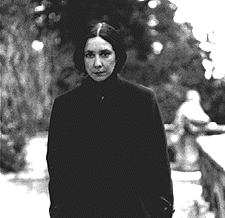Margarita Tupitsyn |
 |
| Margarita Tupitsyn is an independent scholar and curator. Born in Moscow, Tupitsyn moved to New York in 1975, where she received her Ph.D from the City University of New York. Tupitsyn began to write about and organize exhibitions of contemporary Soviet art in the late 1970s. Her first exhibition, Russian New Wave, in 1981, introduced the now acclaimed Moscow conceptual art circle to American audiences. While curator of the Contemporary Russian Art Center in SoHo from 1981 to 1984, she worked on the Norton Dodge collection. In 1986, she curated an exhibition of Sots Art at the New Museum of Contemporary Art and published the first theoretical account of this movement. During the perestroika era (1987-1993), she published Margins of Soviet Art, 1989, a survey of Soviet post-modernist art, and curated such exhibitions as The Green Show at Exit Art, After Perestroika: Kitchenmaids or Stateswomen, Independent Curators, New York, and co-curated Between Spring and Summer at ICA, Boston. At the same time, she began to study the last phase of the Soviet avant-garde, particularly such media as photography and photomontage. In 1990, she co-curated Montage and Modern Life and in 1992, The Great Utopia, a major exhibition of the Soviet avant-garde in New York’s Guggenheim Museum. In 1996, Tupitsyn published The Soviet Photograph: 1924-1937 with Yale University Press and in 1997 published Kriticheskoe Opticheskoe, a collection of essays on contemporary Soviet art. Her book Alexander Rodchenko: The New Moscow is forthcoming from Schirmer/Mosel Verlag and she is preparing a book and an exhibition El Lissitzky: Beyond the Abstract Cabinet. The title of her paper at the Stanford Conference will be "THE MODERN SOVIET CITY: After and Double After" |
![]() under construction
under construction